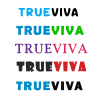How to Build a Legal Freelancer Portfolio
For legal freelancers, a strong portfolio is more than a showcase of past work—it’s a powerful tool to attract clients, demonstrate expertise, and establish credibility. Whether you provide legal research, contract drafting, compliance advisory, or paralegal services, a well-structured portfolio highlights your skills and accomplishments while setting you apart from competitors. This guide provides practical steps for building an effective legal freelancer portfolio, including content strategies, presentation tips, and best practices to showcase your professional capabilities.
Long Description
A legal freelancer portfolio serves as a marketing and trust-building instrument. Clients often rely on portfolios to evaluate whether a freelancer can meet their project requirements, handle sensitive information, and deliver high-quality work. Unlike traditional resumes, portfolios provide tangible evidence of your capabilities, including case summaries, sample contracts, compliance frameworks, and project outcomes.
This guide will walk freelancers through strategies to create a compelling portfolio, highlighting relevant experience, legal expertise, and professional achievements while maintaining client confidentiality.
1. Understanding the Importance of a Legal Freelancer Portfolio
Credibility: A portfolio demonstrates competence, reliability, and professional experience.
Client Trust: Shows prospective clients that you have successfully handled projects similar to theirs.
Differentiation: Helps you stand out in a competitive freelance legal market.
Marketing Tool: Supports proposals, pitches, and online profiles with real-world examples.
2. Key Components of a Legal Freelancer Portfolio
a) Professional Summary
Introduce yourself and your area of expertise (e.g., contract law, intellectual property, compliance).
Highlight your experience, certifications, and any specialized skills.
b) Showcase of Work
Include sample documents (with sensitive details redacted), case studies, research summaries, or compliance checklists.
Demonstrate versatility across different legal areas or industries.
c) Client Testimonials
Include feedback from past clients, law firms, or corporate teams you have supported.
Positive reviews enhance credibility and encourage trust.
d) Certifications and Education
List relevant degrees, paralegal certifications, or specialized courses.
Highlight continuous learning and professional development.
e) Services Offered
Clearly outline the freelance legal services you provide.
Use concise bullet points to communicate offerings like contract drafting, legal research, IP support, or compliance advisory.
3. How to Gather Portfolio Content
Redact Sensitive Information: Remove client names, personal data, or confidential details.
Use Hypothetical Examples: Create sample projects that demonstrate your skills.
Include Achievements: Highlight outcomes like compliance improvements, successful case research, or efficient document preparation.
Track Ongoing Projects: Maintain records of work that can later be showcased once permitted.
4. Portfolio Presentation Tips
Choose the Right Format: Online portfolios, PDFs, or personal websites work well.
Organize Content Clearly: Use categories like contracts, research, compliance, and case studies.
Use Visuals Where Possible: Charts, flow diagrams, or checklists can make complex legal work more understandable.
Keep it Professional: Ensure consistency in fonts, formatting, and tone.
5. Building an Online Portfolio
Personal Website: Showcase your services, portfolio, client testimonials, and contact details.
Freelance Platforms: Upload portfolio examples on Upwork, Fiverr, LinkedIn, or specialized legal freelancing sites.
SEO Optimization: Include keywords like “freelance legal consultant,” “contract drafting services,” or “compliance advisor” to attract clients searching online.
6. Marketing Your Portfolio
Networking: Share your portfolio with professional contacts, law firms, and online communities.
Social Media: Promote projects, achievements, and client success stories on LinkedIn and other professional platforms.
Proposals and Pitches: Include portfolio links in client proposals to demonstrate capability.
Email Campaigns: Share portfolio highlights in targeted communications to potential clients.
7. Best Practices for Legal Freelancer Portfolios
Update Regularly: Keep content current with new projects, certifications, or achievements.
Maintain Confidentiality: Always redact client-sensitive information.
Focus on Quality over Quantity: Showcase projects that best represent your skills.
Highlight Results: Emphasize outcomes, efficiency, and value delivered.
Show Professional Growth: Include learning experiences, certifications, and skill development over time.
8. Opportunities for Growth
Specialization: Highlight expertise in niche areas like IP law, GDPR compliance, or contract negotiation.
Collaboration: Include team projects or collaborations to demonstrate versatility.
Thought Leadership: Publish blogs, articles, or webinars to establish authority in your field.
Client Retention: Use portfolio updates to showcase ongoing success and secure long-term clients.
Conclusion
Building a professional legal freelancer portfolio is essential to attract clients, demonstrate competence, and establish credibility in the competitive freelance legal market. By showcasing your skills, achievements, and services while maintaining confidentiality, you can position yourself as a trusted legal consultant. At freelancerbridge, we encourage freelancers to invest time in creating comprehensive portfolios that reflect their expertise, professionalism, and ability to deliver high-quality legal services.


 by Emily
by Emily




